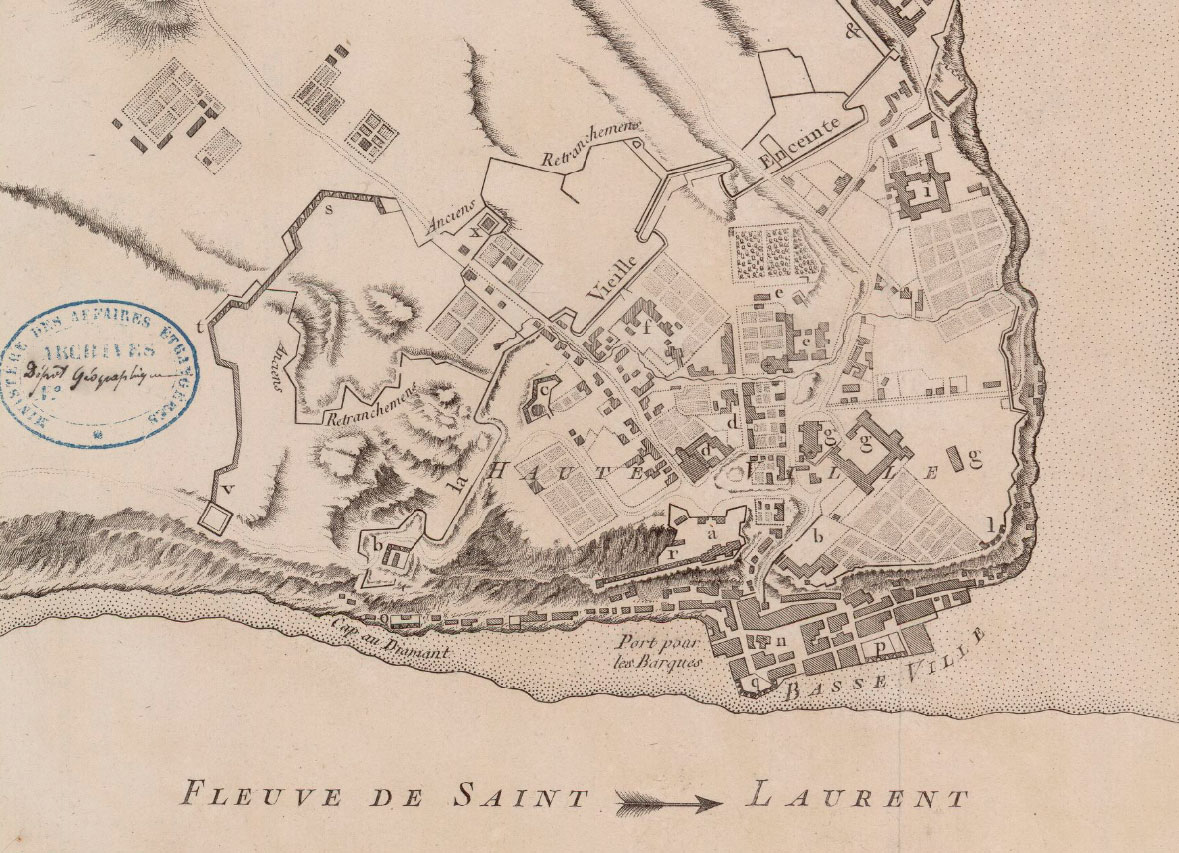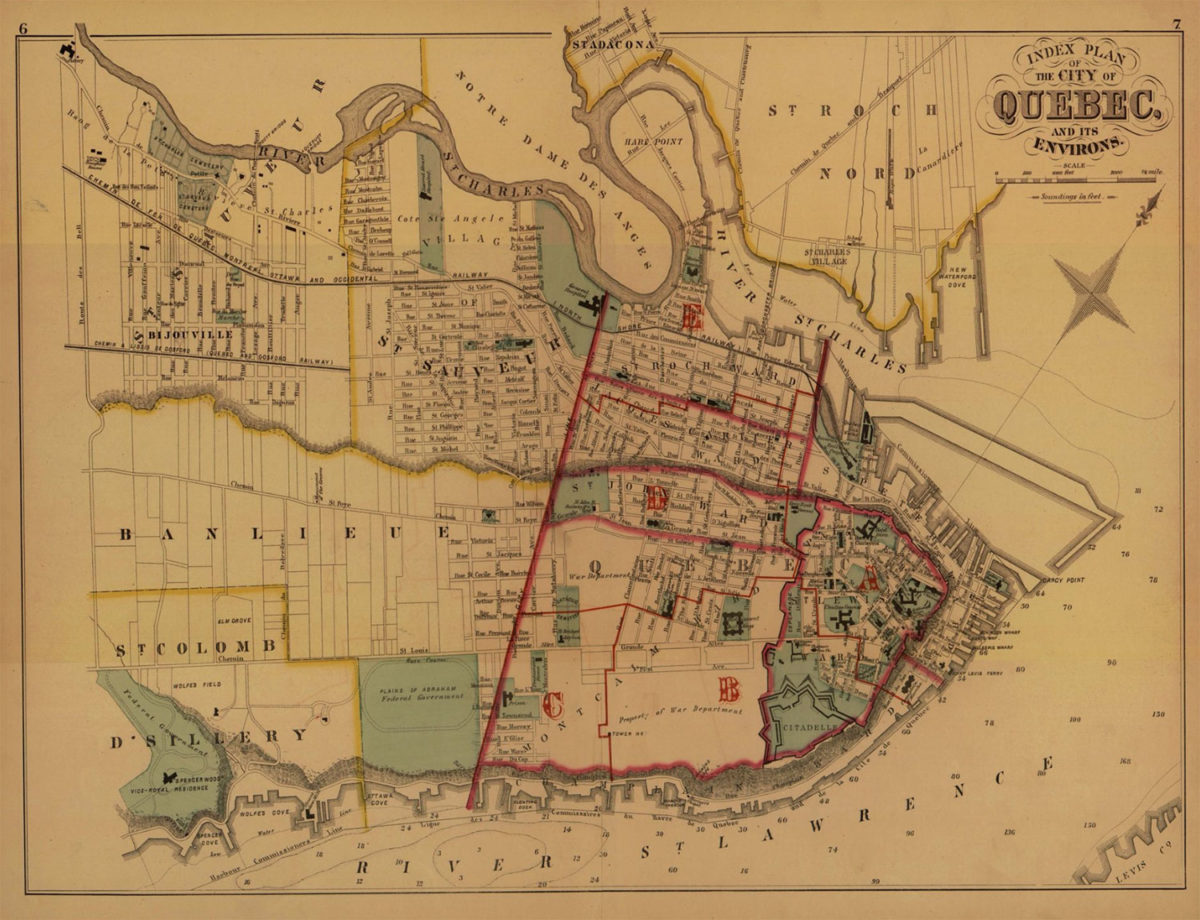27 March 2018
The Story of an Armoury
Ten years after it burned to the ground, Québec City’s historic drill hall is ready to be recommissioned. While it remains the home of reserve infantry unit Les Voltigeurs de Québec, two sections will also be open to the public: the Commemorative Hall, where visitors can learn all about the history of the regiment, and a new multipurpose room equipped for a variety of civilian activities, including balls, receptions, and private and ceremonial events. But before we step inside, let’s take a step back to explore the historic past of this landmark building.
Close‑up: A site with a whole lot of history
As with many cities, Québec’s urban fabric was woven over time around a central core. For a long time, the armoury site remained vacant.
In the days of New France, while roads and buildings were going up inside the city walls, the area were the drill hall now sits was unoccupied. Under Governor Charles Huault de Montmagny, a parade ground was established near Fort Saint‑Louis in the 1640s for drills, parades, and regimental inspections, and there didn’t seem to be any need for another military training ground outside the walls.
During the Seven Years War, known in North America as the French and Indian War, the site was still unused, although some skirmishes took place there during the famous Battle of the Plains of Abraham. In a 1764 map of Québec City drawn by cartographer Jacques‑Nicolas Bellin, we can see that the site is still unoccupied.

In the 19th century, the British army started looking for a site for a new and bigger parade ground where its regular and reserve troops could drill.
In 1863, a wooden drill hall was built for Les Voltigeurs de Québec. The reserve regiment had just been officially established the previous year (1862) and is the oldest French Canadian military unit still active in Canada. Back then, the grounds around the hall were used for military man oeuvres and drills.
The building was so modest that in 1879, it wasn’t even included in the City of Québec’s insurance policy.

A training ground for Les Voltigeurs
In 1883, architect Eugène-Étienne Taché is requested to design a building that would replace the old wooden drill hall. Twenty years of use had taken their toll and the regiment needed a home base worthy of its occupants.
Taché, who also designed Québec City’s parliament buildings and courthouse, came up with a bold design inspired by the Loire chateaux of the 15th–17th centuries. It was the first time the Château style had been used in Québec City. It would not be the last.
Construction started in 1885 and two years later, Les Voltigeurs moved in. The building was officially inaugurated in 1888 by none other than sir Frederick Arthur Stanley, Governor General of Canada.
The building exterior was made of locally quarried stone. With its finely wrought windows, beautiful wrought‑iron fixtures, and copper roof, the new structure was stunning. The interior was every bit as remarkable: the 2,000 m2 drill hall was unobstructed by a single column and the sculpted wood ceiling had a viewing gallery running all the way around—features that were much admired.
A landmark building in Québec City
Although first and foremost a military building, the drill hall has played an active role in civilian life. Tourists could visit, and local residents gathered there for a variety of events.
Over the years, the facility has been used for balls, classical music concerts, Bastille Day celebrations, and a high‑profile military music festival. Provincial agricultural exhibitions, horticultural exhibitions, book fairs, and other major events have also taken place within its walls. From the moment it was built, the armoury became a signature social and cultural space for the people of Québec City.

Expanded in 1913 and maintained in pristine condition, the drill hall was designated a National Historic Site of Canada in 1986. With its turrets, barbican windows, and numerous exuberant architectural details, the Château‑style military building is the only one of its kind in the country.
The area in front of the armoury, which was renamed Place George V in 1917, is one the few drill hall parade grounds remaining in Canada.
Like a phoenix, rising from the ashes
During the night of April 4–5, 2008, a fire engulfed the armoury, burning it down to its stone walls. Ironically, Québec City was celebrating its 400th anniversary that same year and a number of ceremonies were scheduled to take place there. But the building was in cinders.
The flames consumed the building’s largely wooden interior, leaving only the stone façade. Fortunately, most of the Voltigeurs military museum collection was saved from the blaze, but a huge amount of work lay ahead if the armoury was to be rebuilt. (More on that in a future article.)
So here we are in 2018, with a restored armoury, all ready to welcome new guests! The big drill hall is a near replica of the original and boasts a large multipurpose space. A vast but welcoming wood‑and‑brick structure, it is the perfect setting for events of all kinds and can be partitioned in two sections for more intimate occasions. Be among the first to fill it with the sound of voices, music, and excitement!